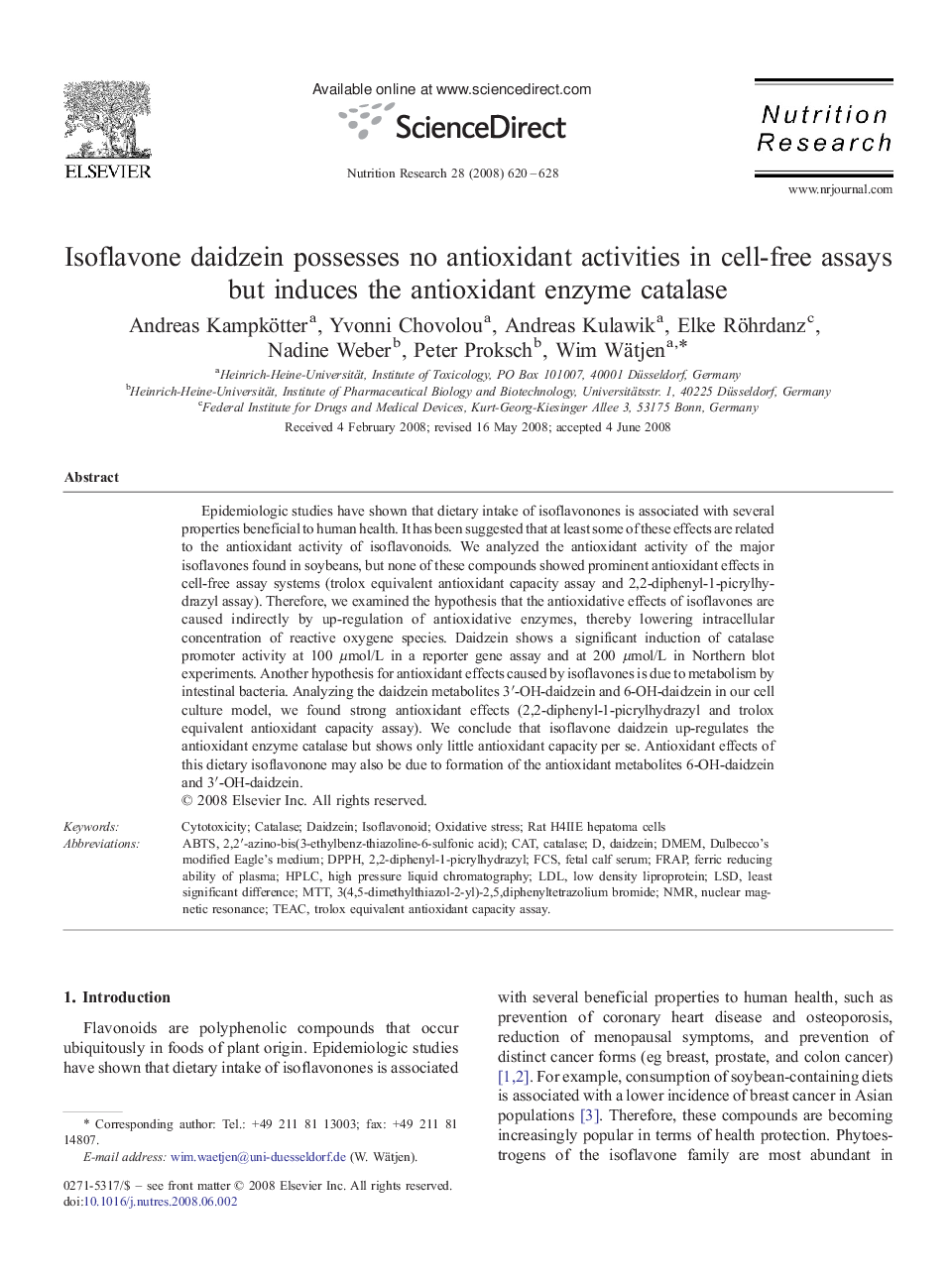| Article ID | Journal | Published Year | Pages | File Type |
|---|---|---|---|---|
| 2809652 | Nutrition Research | 2008 | 9 Pages |
Epidemiologic studies have shown that dietary intake of isoflavonones is associated with several properties beneficial to human health. It has been suggested that at least some of these effects are related to the antioxidant activity of isoflavonoids. We analyzed the antioxidant activity of the major isoflavones found in soybeans, but none of these compounds showed prominent antioxidant effects in cell-free assay systems (trolox equivalent antioxidant capacity assay and 2,2-diphenyl-1-picrylhydrazyl assay). Therefore, we examined the hypothesis that the antioxidative effects of isoflavones are caused indirectly by up-regulation of antioxidative enzymes, thereby lowering intracellular concentration of reactive oxygene species. Daidzein shows a significant induction of catalase promoter activity at 100 μmol/L in a reporter gene assay and at 200 μmol/L in Northern blot experiments. Another hypothesis for antioxidant effects caused by isoflavones is due to metabolism by intestinal bacteria. Analyzing the daidzein metabolites 3′-OH-daidzein and 6-OH-daidzein in our cell culture model, we found strong antioxidant effects (2,2-diphenyl-1-picrylhydrazyl and trolox equivalent antioxidant capacity assay). We conclude that isoflavone daidzein up-regulates the antioxidant enzyme catalase but shows only little antioxidant capacity per se. Antioxidant effects of this dietary isoflavonone may also be due to formation of the antioxidant metabolites 6-OH-daidzein and 3′-OH-daidzein.
